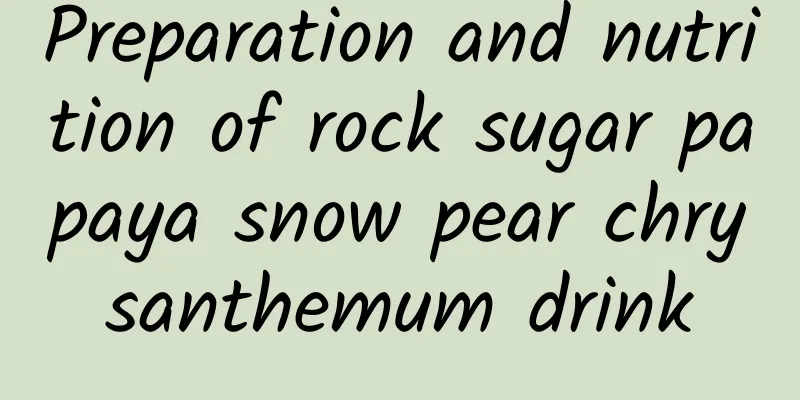How to grow peas in winter

|
I like to eat peas the most. So how to grow peas in the cold winter? What should I pay attention to? Select good varietiesYou can choose from varieties such as white flower peas, medium peas No. 4, medium peas No. 6, snow peas, edible peas No. 1, whiskerless bean tips No. 1, and American bean sprouts. Deep ploughing and fine tillagePeas should not be planted continuously. The land that has been planted with peas should be planted 4 to 5 years later. Deep ploughing and fine preparation should be carried out. The width of the furrow should be determined according to the characteristics of the variety and the drainage conditions of the soil. For vegetable varieties, the width of the furrow should be 1.5 meters (including the furrow) and 2 rows. For grain varieties, the width of the furrow should be 2 meters (including the furrow) and 4 rows. For short varieties, the width of the furrow should be 2.5 to 3.5 meters (including the furrow) and 6 rows. Apply base fertilizerBefore sowing, apply 2500 kg of decomposed manure, 25-30 kg of superphosphate, and 10-15 kg of potassium chloride per mu, in strips or holes. You can also use 30-40 kg of triple compound fertilizer for hole application. Sowing at the right timeGenerally, sowing is done in mid-to-late October, with a row spacing of 40 cm and a plant spacing of 20 cm. There are 10,000 holes per mu, 2 to 3 seeds per hole, and a seed rate of 5 to 7.5 kg per mu. Tall varieties and seedling varieties should be planted closely. For vegetable tall stalk soft pod peas and tall stalk sweet peas, the row spacing is 70 to 80 cm and the plant spacing is 30 cm, which is convenient for management and picking. Early-maturing dwarf varieties such as Zhongwan No. 4 and Zhongwan No. 6 are sown in late November, with a seed rate of 10 kg per mu, a row spacing of 30 to 35 cm, a plant spacing of 10 to 15 cm, and 2 to 3 seeds per hole. Field managementAfter the emergence of seedlings, check the seedlings in time to fill in the gaps, and cultivate and weed 1 to 2 times. Apply heavy topdressing during the seedling stage, especially for fields where no or little base fertilizer is applied. Generally, 5 to 7.5 kg of compound fertilizer or 5 kg of urea or 1,000 kg of decomposed human feces and urine are applied per mu. When the temperature of tall-stalked varieties rises in spring and the plants begin to elongate, insert small bamboos with tips or branches (without leaves) between the rows to allow the bean plants to climb and grow. Peas are not tolerant to waterlogging, so pay attention to clearing ditches and draining water in spring. More nutrients are needed during flowering and podding, so apply 7.5 kg of urea and 5 kg of triple compound fertilizer per mu. Spray 1% urea and 0.3% potassium dihydrogen phosphate twice during the grain filling stage. Harvest at the right timeThe harvesting time is determined by the way of consumption. Generally, peas for grains are harvested when the seeds are full 15 to 18 days after flowering; dry peas are harvested when 70% to 80% of the pods are yellow; vegetable peas (snow peas) are harvested 12 to 14 days after flowering when the seeds are visible in the young pods but not in the grains; pea seedlings are harvested at the top tender shoots when the seedlings are 18 cm tall about 30 days after sowing; peas for feed are harvested during the peak flowering period; peas for green manure are turned over in time after the pods are harvested. |
<<: How to grow peas on the balcony
>>: Key points of pea cultivation How to grow peas
Recommend
What is Liseberg Amusement Park like? Liseberg Amusement Park Reviews and Website Information
What is Liseberg? Liseberg is a famous Swedish the...
What are the benefits of eating red date powder?
The skin of red dates is very thin, and the flesh...
How to eat beef lungs Common methods and techniques for eating beef lungs
Beef lung is a special food in life. It has excel...
How to grow Sedum sedum and what to pay attention to when growing Sedum sedum
Sedum is a kind of succulent plant belonging to t...
The efficacy and function of mung bean skin
Mung bean skin locks in all the nutrients of mung...
Nutritional value of Nanguo pear
Nanguo pear is a kind of pear. Nanguo pear is the...
Planting points and cultivation techniques of Serissa serrata
There is a kind of snow called June Snow. It is n...
How is the Foggia Academy of Fine Arts? Reviews and website information of the Foggia Academy of Fine Arts
What is the website of Foggia Academy of Fine Arts...
What is Roma III like? Roma III reviews and website information
What is the website of Roma III? The University of...
The efficacy and function of Chuhong kiwifruit
Chuhong kiwi is a unique variety among Chinese ki...
How is the University of Bergamo? Evaluation and website information of the University of Bergamo
What is the website of the University of Bergamo? ...
How is Macquarie University in Australia? Reviews and website information of Macquarie University in Australia
What is the website of Macquarie University in Aus...
The efficacy and function of melon
Muskmelon is a delicious fruit. It not only taste...
What are the varieties of loofah
What are the excellent varieties of loofah? This ...
Dandelion tea for women Benefits of drinking dandelion tea
We all know that dandelions are common. When the ...









